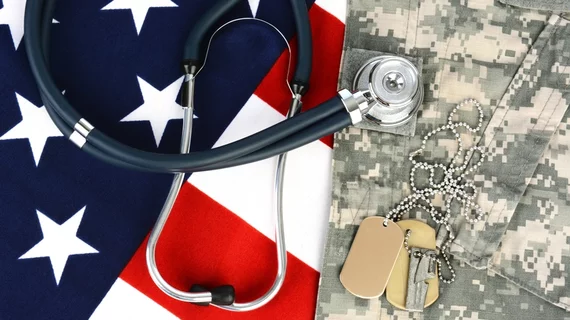Black Veterans Administration (VA) and Medicare patients with atrial fibrillation (AFib) are less likely to initiate any type of anticoagulant therapy, according to new data published in Circulation: Cardiovascular Quality and Outcomes.
The study included 43,789 patients. Data was from the VA Corporate Data Warehouse, CMS and the University of Wisconsin School of Medicine and Public Health’s Neighborhood Atlas.
While 98.2% of patients were men, the mean patient age was 73 years old. In addition, 87.5% of patients were white, 8.9% were Black, and 3.6% were Hispanic. In addition, most patients had a moderate (68.2%) or high (22.3%) stroke risk based on CHA2DS2VASc scores.
According to the authors, the primary outcome was “initiation of any type of oral anticoagulant (OAC) therapy, defined as the first outpatient prescription for warfarin or direct-acting oral anticoagulant (DOAC) dispensed and picked up or distributed by a VA pharmacy, or filled via Medicare Part D within 90 days of an index AFib diagnosis.”
Overall, 67.8% of patients initiated OAC therapy. Of that group, 59.2% started DOACs.
OAC therapy was initiated by a lower percentage of Black patients (65.2%) than Hispanic patients (67.6%) or white patients (68%).
DOAC use was seen 56.3% of Black patients, 55.9% of Hispanic patients and 59.6% of white patients.
Nearly 11 percent of patients were enrolled in Medicare Part D between 2012 and 2015. The researchers observed that Medicare Part D enrollment did not moderate the link between race and ethnicity and anticoagulant therapies.
The authors noted that, compared to white patients, Black patients had considerably lower initiation of any kind of anticoagulant.
“To our knowledge, this is the first analysis examining racial and ethnic anticoagulant inequities in patients dually enrolled in VA and Medicare in an era of increased DOAC use globally and within VA,” wrote lead author Utibe R. Essien, MD, MPH, of the VA Pittsburgh Healthcare System, and colleagues. “Our current analysis builds upon prior work examining anticoagulant disparities in VA by expanding upon methods of AFib cohort identification, including by examining dually enrolled veterans, and anticoagulant ascertainment using Medicare drug information.”
Essien et al. noted: “Our observation that nearly all dual enrolled patients received OAC therapy, particularly DOACs, through VA, has important implications. Similar to prior work we observed a small percentage (fewer than 1%) of all anticoagulant prescriptions were obtained from Medicare, with most patients receiving their therapy from VA.”
The authors concluded that tracking these statistics "is critical to ensuring equitable AFib management" among U.S. veterans.
"Such understanding will also guide the design and implementation of policy-level interventions to reduce disparities in anticoagulation for AFib," they wrote.
Read the full study here.
